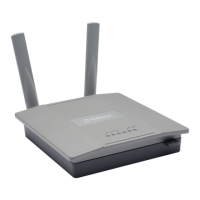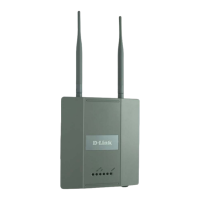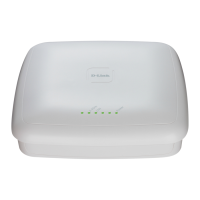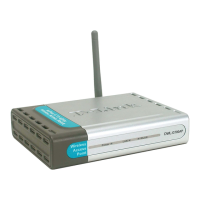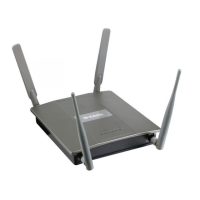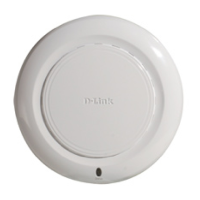Optimizing WLAN Traffic
D-Link Unified Wired and Wireless Access System
July 2012 Page 715
D-Link UWS User Manual
Optimizing WLAN Traffic
The Unified Wired and Wireless Access System includes features that automatically help to optimize wireless
traffic on the network. This section describes the following features:
• Automatic channel selection and adjustment on access point radios
• Automatic power adjustment for access point RF transmission power levels
• Per-radio load balancing to set the maximum utilization threshold
By default, the automatic channel selection, automatic channel adjustment, and automatic power adjustment
features are enabled but require manual triggers to run. Load balancing is disabled by default. This section
describes ways to monitor the channel and power of the AP and to make manual adjustments, if necessary. It
also describes how to enable the load balancing feature and monitor WLAN utilization. This section assumes
that the switch has been configured and is currently managing multiple APs.
Monitoring and Managing Channel Information
Interference can occur when multiple access points within range of each other are broadcasting on the same
or overlapping channels. The impact of this interference on network performance can intensify during busy
times when a large amount of data and media traffic is competing for bandwidth. When APs are within
broadcast range of each other, the radios must use different channels to avoid causing RF interference. For the
802.11b/g radio, neighboring APs must operate on channels that are at least five channels apart. For example,
if AP1 and AP2 are neighbors, AP1 can operate on channel 6 while AP2 operates on channel 11. Channels in
the 5 GHz band (802.11a/n) do not overlap, so these channels interfere only if neighboring APs operate on the
same channel.
To avoid interference with neighbor APs, the Unified Wired and Wireless Access System uses an Initial Channel
Selection (ICS) algorithm. When the AP is powered up the ISI algorithm scans all the available channels and
counts the number of packets received on each channel. The best operating channel is considered to be the
one with the lowest packet count, and this channel is assigned to the AP radio.
To view the channels that are assigned to managed APs, click WLAN > Monitoring > Access Point > Managed
AP Status. As Figure 439 on page 716 shows, Radio 1 (802.11a/n) on AP_1 is operating on channel 157, Radio
1 on AP_2 is operating on channel 44, and Radio 1 on AP_3 is operating on channel 36. Radio 2 (802.11b/g/n)
on AP_1 is operating on channel 1, Radio 2 on AP_2 is operating on channel 6, and Radio 2 on AP_3 is operating
on channel 11. For both radios, the operating channels for AP_1 do not interfere with the operating channels
for AP_2.
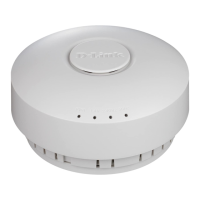
